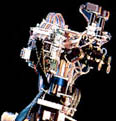
 Mediated Nature
Mediated Nature
Phagamys orthodon
Mus musculus muralis
Hypnomys morpheus
Hypnomys mahonensis
Thyrrhenicola hanceni
Pitymys bavaricus
Mammothus primigenius
Equus hemionus anatoliensis
Equus ferus silverstris
Prolagus sardus
Prolagus corcianus
Nesiotites similis
Nesiotites corsicanus
Panthera tigris virgaes
Panthera pardus tulliana
Panthera leo europaea
Felis lynx sardiniae
Sinotherium sardus
Canis lupus minor
Canis lupus deiesnus
Hippopoesmus sp.nov
Mecodema punctellum
Candibrervus ropalophorus
Candibrervus rethymnensis
Myotragus balearicus
Capra pyrenaica pyrenaica
Capra pyrenaica lusiesnica
Anthicus antiochensis
Aplothorax bunrchelli
Atelothrus transiens
Blackburnia insignis
Chaetotrechiana kiuchii
Disenochus micantipennis
Ishikawatrechus intermedius
Rangifer esrandus


Mediated Nature
We do not question whether the things that happen on radio or television have actually occurred. The fact that we can confront them mentally through electronics is sufficient for us to know that they exist... (Les Levine)For the many people who live in ‘media rich’ societies, losing touch with the condition of the biosphere is easy. The frenetic production and distribution of information, constantly amplified and accelerated, is stealing nature's thunder. With the transformation of media technology, an altered perceptual condition has emerged. Although much information is produced and exchanged concerning environmental problems, the use of Internet databases to interpret the condition of the planet is problematic. The constant duplication of digital imagery blurs the status of the things pictured. And there is no guarantee that things made visible by the expanding Internet database continue to exist ‘offline.’ In a state of confused distraction, the natural world is difficult to recognize.

[ Next ]
 Introduction
Introduction